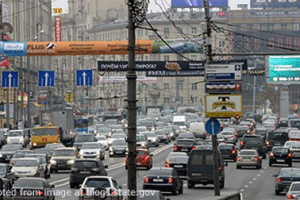New Moscow-St. Petersburg Highway Emblematic of Russia’s Road Problems and Much Else

(Paul Goble – Window on Eurasia – Staunton, Nov. 15, 2019)
By the end of November, the new M-11 superhighway between Moscow and St. Petersburg is scheduled to be opened for traffic, a move that will significantly shorten the time for travel between the two capitals. But both its construction and its finished form reflect many problems that plague Russian roads and the Russian system more broadly.
In a commentary for Vzglyad, Aleksi Anpilogov says that the new highway “has solved a big problem but given rise to several smaller ones, an assessment almost anyone who has followed the often fraught path of Russian highway construction in recent years will second (vz.ru/economy/2019/11/15/1008573.html).
The path of the highway at each end, because it cut through existing construction, was a problem, he continues; but the biggest protests were sparked by Russians concerned about the environment and the fact that the road was slated to pass through two protected areas. Their objections were met by studies showing the road would reduce pollution and thus was “a lesser evil” than any harm done to the parks and forests.
That is because the new road would allow the thousands of cars and trucks on it to move more quickly rather than the five to seven kilometers an hour sometimes encountered on the existing M-10 highway and thereby reduce the amount of pollutants being dumped into the atmosphere by three to five times.
If environmental challenges were the first thing the new highway had to meet, the financing of the problem was the second. The government paid 75 percent of the 153 billion ruble (2.5 billion US dollar) cost of the highway, but a joint Russian-French company which involved Arkady Rotenberg financed the remaining 25 percent.
“Of course,” Anpilogov says, “such a practice inevitably led to the project becoming more expensive over time.” Both the state and the private investors will recoup their investment by means of tolls which will vary according to the size of the vehicle and the time and day of the week depending on traffic. The average charge for cars for the entire route is expected to be 2780 rubles (about 45 US dollars), a very high and even excluding figure for most Russians.
There are “not a few” other shortcomings with the highway, the Vzglyad commentator says. The on-and-off ramps especially in the vicinity of Petersburg are poorly defined, inadequately signed, and likely to lead to confusion and even accidents. The same thing is true, he says, of some toll plazas.
And the rest areas that have been created are clearly inadequate. One has only ten parking places for what are expected to be no fewer than 30,000 cars passing each day. Moreover, development along the route is likely to require the building of far more exits than the road will have to begin with, making its real cost far higher than claimed.
For those who can afford it and who want to travel from one end to the other, the new highway is a real boon, Anpilogov says. They will be able to make the trip in five hours or so, far less time than is now required in the best of circumstances; and they are unlikely to face the same traffic tie ups they do at present.
But for many who want to use it to go only part of the way or who must use it frequently despite its costs, this latest showpiece of Russian development won’t be nearly as good as advertised, something that is true not only of the M-11 but of many other Putin-era projects as well.
[Article also appeared at windowoneurasia2.blogspot.com/2019/11/new-moscow-st-petersburg-highway.html]
[featured image is file photo from another occasion and place]
